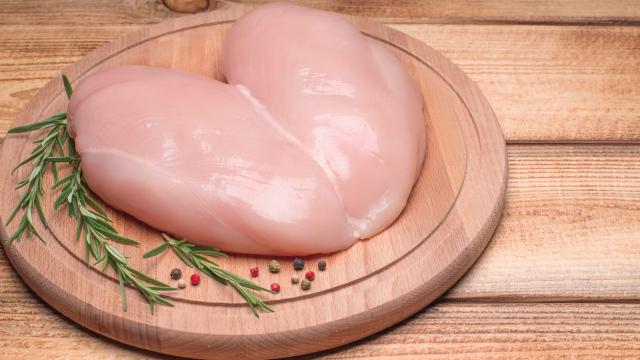Meats are muscles. On account of this, they’re not perfectly symmetrical bricks. Different cuts can be tear-dropped, conical, or otherwise shaped asymmetrically with a thick and thin side. But, alas, uneven shapes lead to uneven cooking. The thinner end of a chicken breast can come to temperature relatively quickly compared to the bulbous end that might be nearly two inches thicker. Put an end to partially overcooked, dried-out, rubbery meat parts, and try a technique called “butterflying.”
Butterflying is a simple method for modifying a cut of meat by slicing it in half horizontally. You can cut it through completely in this fashion and end up with two thin pieces, or take care not to cut through the other side, and open it like a book. This serves to even-out a cut of meat and extend the surface area. Keep in mind, butterflying doesn’t turn the meat into a perfect rectangle, but rather modifies an extremely asymmetric cut to give it a more even thickness. Butterflying allows for more even exposure to heat, but the increase in surface area serves other functions too. It allows for easier pounding or tenderizing, thorough absorption of flavours through marinating, a more flexible and thin material for roulades, and a shortened cook time.
How to “butterfly” a cut of meat
Butterflying a cut of meat takes a little getting used to at first, but once you do it a few times, it becomes easy, fast, and deliciously rewarding. Make sure you have a sharp knife, and a stable cutting board. Lay the meat on the cutting board. For an elongated cut of meat, such as a chicken breast, I usually place it so the thickest side is on the right and the point of the breast is pointing at me. The goal is to cut through the thicker side first, so if you’re left-handed flip it over. I’m right-handed, so the thick side will be on the right.
Place the knife against the chicken halfway down the thick side, parallel to the cutting board, and use slow strokes to begin cutting through. It helps to use your non-dominant hand to hold the chicken, and also lift the top section away as you butterfly. This steadies the meat and also creates some tension in the flesh to make cutting easier. Again, do this slowly, keep your fingers safe, and periodically check on where your knife is headed. One of the easiest mistakes you can make is to cut quickly without checking, and end up with one tiny piece and one big weird piece. One of the worst mistakes you can make is not checking on the knife’s path, and accidentally cutting yourself.
If you want two thin cuts, continue your cut through to the otherside. If you’d like one thin cut with a wide surface area, stop the cut about a half inch from the otherside, and open it completely like a book (the hinge-side would be like the book’s binding). The idea is to make the binding roughly as thick as the rest of the now-open chicken breast, so use your judgment on if you should stop more or less than a half-inch from the thin side. Once you become more comfortable, you can even try to butterfly meat into three pieces, or folds.
Butterflying is a helpful technique that you can do to most boneless cuts of meat providing you have precise-enough knife skills. Try butterflying steak, chicken thighs, pork, or shrimp. Enjoy the quick cook time, and marinate, roulade, or tenderize to your stomach’s content.

Leave a Reply
You must be logged in to post a comment.